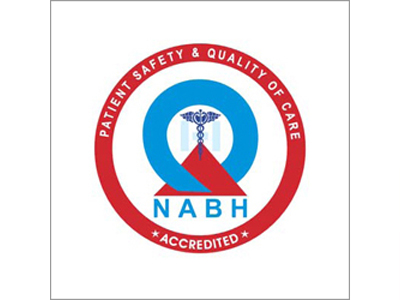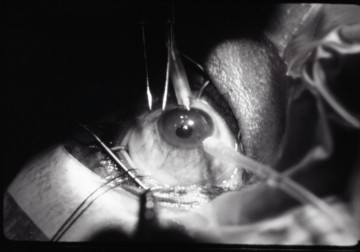In a new study from LVPEI, Drs. Srihari Siddhartha, Sirisha Senthil, and others describe the efficacy and safety of gonioscopy-assisted transluminal trabeculotomy, a surgical treatment for glaucoma that can be performed when standard surgical treatment has failed.
Glaucoma is a major cause of blindness in the world. The disease is a constellation of symptoms characterized by increased intraocular pressure (IOP)—the pressure exerted by fluids inside the eye on the optic nerve and its axons, damaging them. In the most common type of glaucoma, this pressure builds up when the trabecular meshwork (the eye’s frontal fluid drainage zone) blocks up, preventing intraocular fluids from draining out. Managing IOP is a crucial aspect of glaucoma treatment. Medications are the first line of treatment, but surgery is necessary when medicine alone is inadequate. Trabeculectomy (where a new pathway is created for fluid to drain out of the eye) or drainage implants are the go-to surgical options in complex situations. Sometimes, these surgeries may fail due to excessive scarring. In such cases, the options available need specialized skills and are expensive.
Gonioscopy-assisted transluminal trabeculotomy (GATT) is a cost-effective surgical alternative for reducing IOP. GATT is often used as primary surgery in early to moderate glaucoma and is being increasingly adopted across the world. GATT as a surgical option in those with previous failed surgeries was studied in a small cohort in the United States with very promising results. Failed glaucoma surgeries are a significant issue in India and post-trabeculectomy scarring among Indian patients is opening the possibility of angle-based options like GATT among glaucoma practitioners in India. What is missing is a clear understanding of the surgical outcomes in the Indian context.
In a new study published in the Journal of Glaucoma, Drs. Srihari Siddhartha, Sirisha Senthil, and others from LVPEI assessed the safety and efficacy of GATT in a cohort of Indian patients with a history of failed glaucoma surgery. The retrospective study included 30 patients (30 eyes with open-angle glaucoma) who had failed glaucoma surgeries. Among them, 27 patients had a failed trabeculotomy and 3 had a failed drainage device. All patients subsequently underwent GATT, either alone (21 patients) or combined with phacoemulsification (9 patients), a procedure where the eye’s natural lens is replaced by a thinner artificial one, due to cataract. On average, GATT decreased the IOP of patients by 38% within 15 months of surgery. The average number of anti-glaucoma medications (AGM) used by the patients also decreased by 57%. The research team calculated a 20% chance of ‘complete success’ in bringing IOP between 16 to 21 mm Hg, without need for any additional glaucoma drops. The chance of partial success (with one or two additional glaucoma drops) within 1 year of surgery was higher at 82%. The study found older age to be the biggest risk factor affecting the probability of surgical success.
‘This is a heartening study, as it bolsters our understanding of GATT’s efficacy in managing IOP with evidence. Indeed, failure paves the way to success,’ notes Dr. Sirisha Senthil, Head of the VST Centre for Glaucoma Care at LVPEI and the corresponding author of this paper. ‘Patients with failed glaucoma surgery must take heart. Sometimes, when one door closes, another opens.’
Citation
Siddhartha, S., Krishnamurthy, R., Dikshit, S., Garudadri, C., Ali, M. H., & Senthil, S. (2024). Outcomes of Gonioscopy-Assisted Transluminal Trabeculotomy in Eyes with Prior Failed Glaucoma Surgery. Journal of Glaucoma, 33(8), 612–617. https://doi.org/10.1097/IJG.0000000000002414
Photo credit: NARA & DVIDS Public Domain Archive



